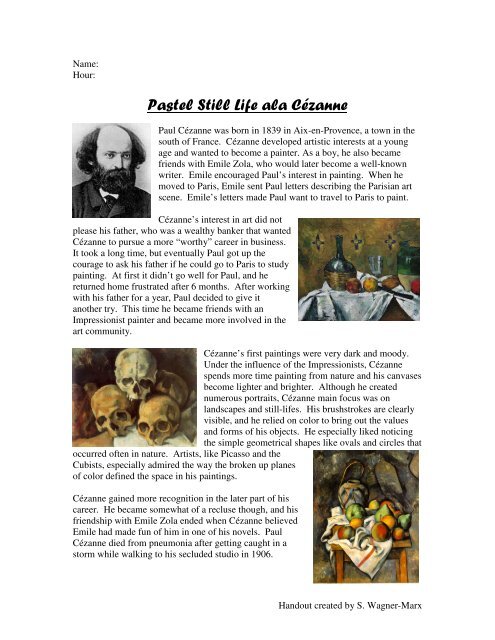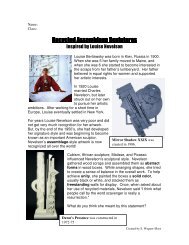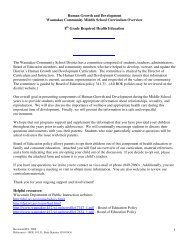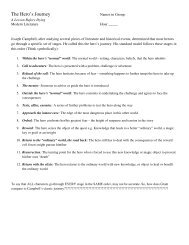Cezanne Still Life Handout
Cezanne Still Life Handout
Cezanne Still Life Handout
Create successful ePaper yourself
Turn your PDF publications into a flip-book with our unique Google optimized e-Paper software.
Name:<br />
Hour:<br />
Pastel <strong>Still</strong> <strong>Life</strong> ala Cézanne<br />
Paul Cézanne was born in 1839 in Aix-en-Provence, a town in the<br />
south of France. Cézanne developed artistic interests at a young<br />
age and wanted to become a painter. As a boy, he also became<br />
friends with Emile Zola, who would later become a well-known<br />
writer. Emile encouraged Paul’s interest in painting. When he<br />
moved to Paris, Emile sent Paul letters describing the Parisian art<br />
scene. Emile’s letters made Paul want to travel to Paris to paint.<br />
Cézanne’s interest in art did not<br />
please his father, who was a wealthy banker that wanted<br />
Cézanne to pursue a more “worthy” career in business.<br />
It took a long time, but eventually Paul got up the<br />
courage to ask his father if he could go to Paris to study<br />
painting. At first it didn’t go well for Paul, and he<br />
returned home frustrated after 6 months. After working<br />
with his father for a year, Paul decided to give it<br />
another try. This time he became friends with an<br />
Impressionist painter and became more involved in the<br />
art community.<br />
Cézanne’s first paintings were very dark and moody.<br />
Under the influence of the Impressionists, Cézanne<br />
spends more time painting from nature and his canvases<br />
become lighter and brighter. Although he created<br />
numerous portraits, Cézanne main focus was on<br />
landscapes and still-lifes. His brushstrokes are clearly<br />
visible, and he relied on color to bring out the values<br />
and forms of his objects. He especially liked noticing<br />
the simple geometrical shapes like ovals and circles that<br />
occurred often in nature. Artists, like Picasso and the<br />
Cubists, especially admired the way the broken up planes<br />
of color defined the space in his paintings.<br />
Cézanne gained more recognition in the later part of his<br />
career. He became somewhat of a recluse though, and his<br />
friendship with Emile Zola ended when Cézanne believed<br />
Emile had made fun of him in one of his novels. Paul<br />
Cézanne died from pneumonia after getting caught in a<br />
storm while walking to his secluded studio in 1906.<br />
<strong>Handout</strong> created by S. Wagner-Marx
Project<br />
For this project you will be using soft pastels to create a drawing of a still life. It is<br />
important for you to keep the following things in mind:<br />
o Start with some thumbnail sketches to<br />
figure out your composition. You want a<br />
sense of balance, unity, and emphasis.<br />
o When you find a working composition,<br />
transfer it to final paper with light pencil<br />
lines.<br />
o Use the pastels to render the values, and<br />
colors you see. Avoid using too much<br />
black in shadows. Instead try to blend<br />
complimentary colors to create darker<br />
values and shades.<br />
o Pay attention to the values. How are<br />
you creating a sense of depth in your<br />
drawing? Do the objects in the<br />
foreground contrast with the<br />
background?<br />
o You may change the colors of objects<br />
as long as you maintain a sense of the<br />
existing values!<br />
<strong>Handout</strong> created by S. Wagner-Marx

















